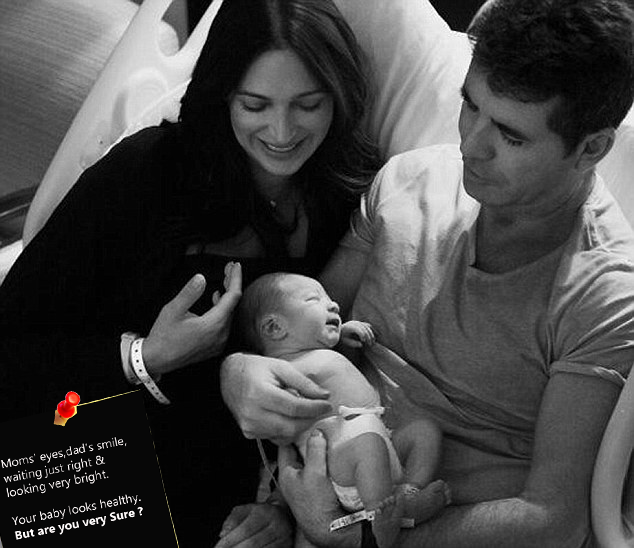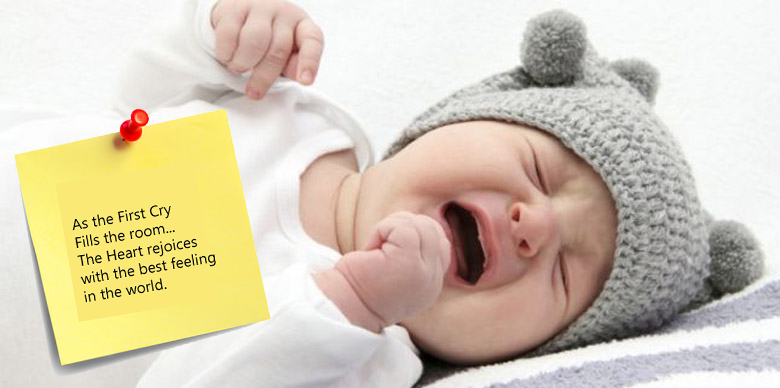Newborn Screening is the process by which infants are screened shortly after birth for a list of disorder (including genetic and metabolic conditions e.g. G6PD,Thalassemia , Hypothyroidism & many more) that can affect a baby’s normal physical and mental development.
Purpose : To Enable early detection before any symtoms appear
– To enable early treatment to improve health.
– To reduce anxiety caused by uncertainty over symptoms before clinical diagnosis is made.

What if the baby is screened positive ?
if the baby is screened positive , another sample (at no additional cost) would be collected for confirmatory testing.on confirmed diagnosis, the consulting doctor in co-operation with expert team at the Lab would help determine the next course of action. Support in genetic counseling, referral to a subject expert and treatment support would be extended.
What sample are to be collected ?
Newborn Screening is a safe & simple procedure.It requires a few blood spots by taking a drop of blood via a simple heel-prick as the parent enrolls.
As a Rule of Thumb,Prevention is batter than cure,so is early Detection is batter than Late Detection
if you want your baby to underage Newborn Genetic Screening Contact your Hospital for further assistance
| Age | IQ | Range |
| 0-3 Months | 89 | 64-117 |
| 3-6 Months | 71 | 35-96 |
| More then 6 Months | 54 | 25-80 |
Cord blood/ Sample<48 hours Problems of physiological TSH surge High Recall rates.
Useful if mother TRAB+ or on antithyroid Rx.
Dried blood spot-48-62 hours ideal sample.
For LBW,VLBW,sick reonates Day 7 onwards- Due to late maturation of Hypothalamus-Pituitary-Thyroid axis.
Day 3 blood(48-72 hours)
– Advantage:
– Collection in filter paper through single heel prick
– Easy to transport to distant labs
– ideal time for screening for CH,IEMs
– Disadvantage:
– Early discharge
– Invasive
– Availability of personnel- for outreach , sampling
– Availability of filter paper,transport
– Later sample (>7 days) : May delay treatment of CAH,CH,galactosemias,other IEMs
Non-invasive
Can be dried on filter paper & transported
Limited number of conditions screened
Primarily organic acidemias by GCMS
Lower sensitivity and specificity
Limited experience
Not a preferred sample
– Wilson and Jungner Criteria (1968) for offering screening:
– The Condition sought should be an important health problem.
– There should be an accepted treatment for patients with recognized disease
– Facilities for diagnosis and treatment should be available.
– There should be a recognizable latest or early symptomatic stage.
– There should be a suitable test or examination.
– The test should be acceptable to the population.
– The natural history of the condition adequately understood.
– Cost – effectiveness
Advantage
Detects Primary HT, Central HT, TBG deficiency
Disadvantage
Can miss cases with low normal T4 levels with late TSH surge
Less widely used in screening programs
Assays not as easily available esp.FT4
Primary TSH
Advantage
Will Studied, widely used
Age dependent TSH values available
Widely available assays
Disadvantage
Does not detect central hypothyroidism, TBG deficiency, Cases with delayed TSH elevation
Parental anxiety (false positives)
Missed Diagnosis (false negatives)
The Right “not to know”
Unanticipated outcomes
Labeling – Diagnosis of benign conditions
Three panels are available in our hospital for new born screening.
Heel Prick Condition
| Sr No | Conditions |
| 1 | G6PD deficiency |
| 2 | Congenital Hypothyroidism |
| 3 | Cystic Fibrosis |
| 4 | Phenylketonuria(PKU) |
| 5 | Galactosemia |
| 6 | Biotinidase deficiency |
| 7 | Congenital adrenal hyperplasia |
Heel Prick Condition
| Sr No | Conditions |
| 1 | Variant hemoglobinopathies including Hb E |
| 2 | Sicle Cell Disease |
| 3 | Congenital adrenal hyperplasia |
| 4 | Phenylketonuria(PKU) |
| 5 | Galactosemia |
| 6 | Biotinidase deficiency |
| 7 | Cystic Fibrosis |
| 8 | Sickle Cell Anaemia |
| 9 | Congenital hyperplasia |
| 10 | Beta thalassemia |
| 11 | G6PD deficiency |



